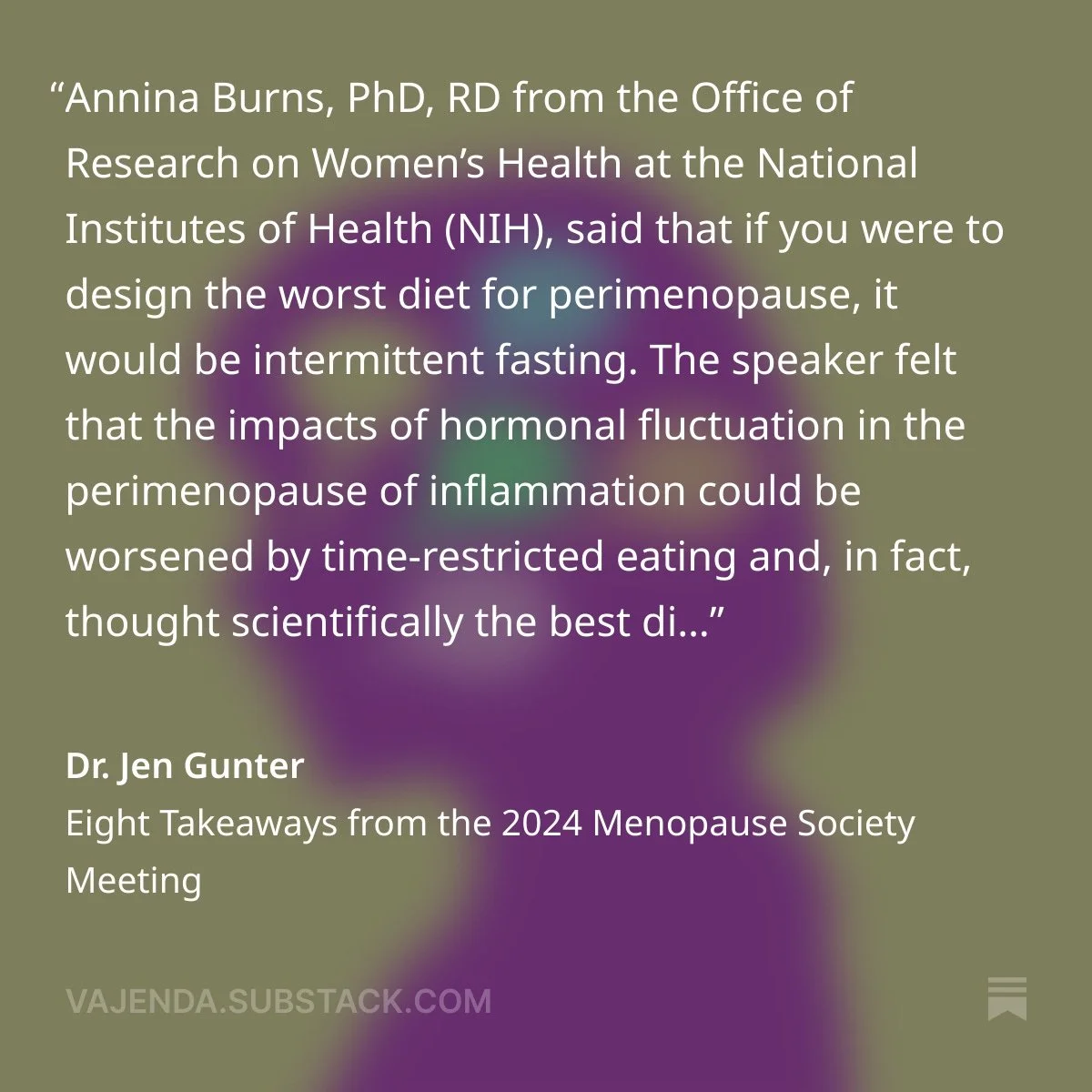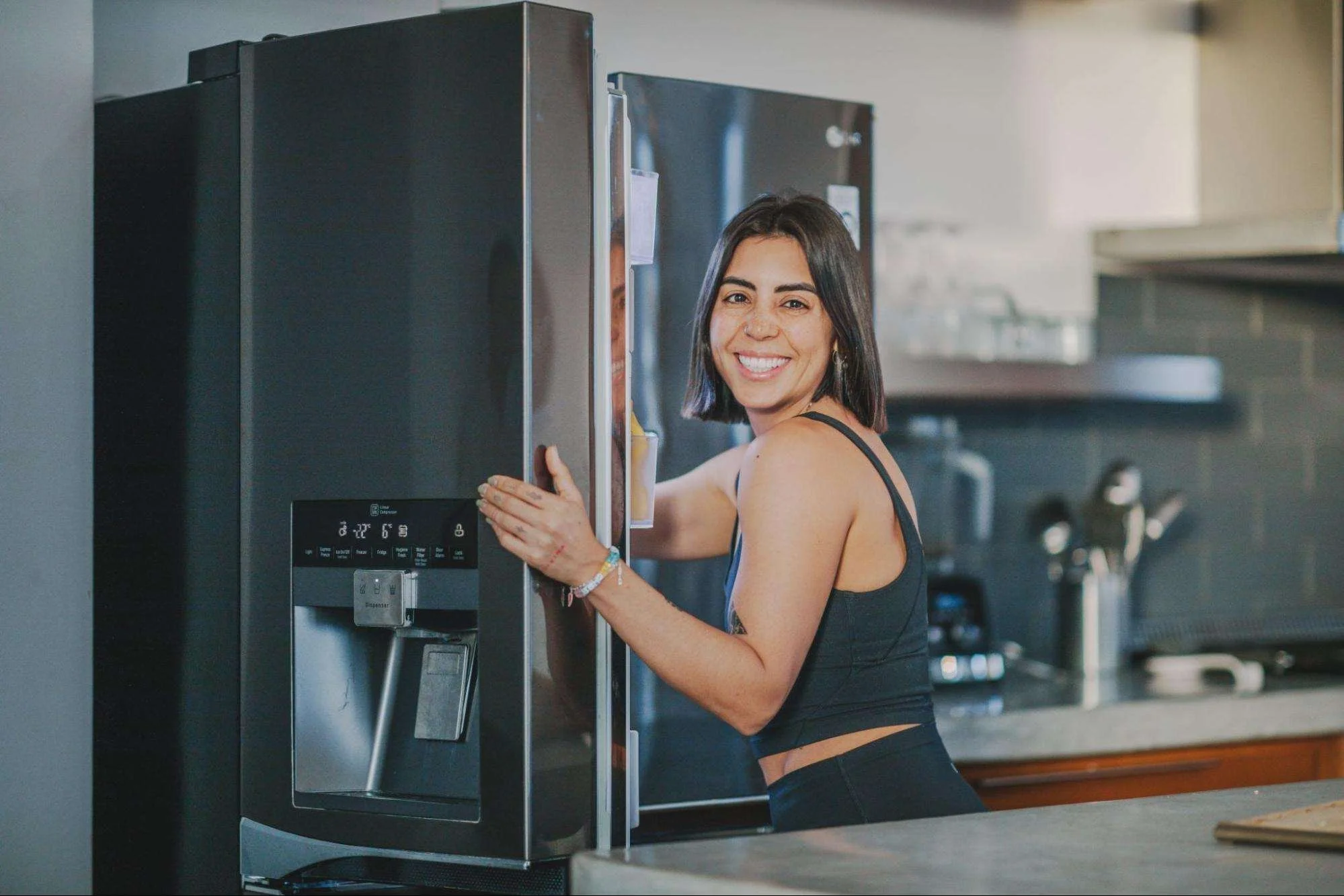3 Habits That Actually Support Your Health During Menopause
Menopause is a major physiological shift, period.
For any woman going through the menopause transition, the bombardment of “solutions” and “hacks” can feel really overwhelming. But here’s the good news: navigating menopause probably doesn’t require overhauling your entire life, chasing endless biohacks, or spending your entire retirement fund on fancy supplements.
Support matters—yes—and having a great care team is important. But more often than not, it’s not about doing more, more, more. It’s about doing what matters most.
I became interested in learning more about menopause (read: diving into as much research as I could about how our nutrition and fitness needs shift during this transition) in 2022. And over the past few years, our KLN team has been super committed to learning how to best support our perimenopausal and menopausal clients—because it’s a time of big shifts, frustrations with feeling like your body isn’t behaving how it used to, and often, a lot of changes happening outside of your body, too.
Everyone’s experience is different. But there are some universal truths that can help you care for yourself best through it all:
BE INTENTIONAL WITH YOUR MOVEMENT: LIFTING + NEAT MATTER
The laundry list of movement “rules” I’ve seen for women in the menopause transition is long (and honestly, exhausting). From the idea that women should avoid HIIT, to the idea they should only be lifting light weights, to the idea that only cardio is “safe” - there is a lot of misinformation out there.
Here’s what we do know (based on science, not Instagram posts!):
Lifting matters: As we age, we naturally lose muscle mass (a process called sarcopenia), and this accelerates during and after menopause due to hormonal changes. Strength training helps maintain (and even build!) muscle mass and supports bone density, which is critical for reducing osteoporosis risk as well.
NEAT matters too: We tend to move less as we age, especially when we’re dealing with fatigue, sleep disruption, or just feeling "off." It makes total sense, right? The literature finds that a decrease in movement (especially a decrease in NEAT aka non-exercise activity thermogenesis, or energy expenditure outside of structured exercise) is a main contributor to weight gain through the menopause transition (meaning it may not just be the changing hormones).
NEAT includes all the activities outside of workouts: walking the dog, cleaning the house, fidgeting, walking while on a call, etc. It all adds up, and it all plays a major role in supporting energy balance (how much energy we burn vs. how much we consume), even more than your workouts do. So, while lifting is important, so is movement outside of those resistance training workouts!
What’s equally important in this phase of life is knowing how to scale movement according to how you’re feeling (mentally and physically). If experiencing unpredictable energy, joint discomfort or sleep disruptions, having some strategies in your back pocket to scale movement and honor your body can be helpful:
STRATEGIES FOR SCALING MOVEMENT THROUGH MENOPAUSE
Having backup plans: Having pre-prepared “backup” options -- like shortened workouts, a walk instead of a lift, or even a mobility-focused day -- can make movement more accessible and help you maintain consistency in your movement without putting so much pressure on yourself.
Try a decision tree: “What’s the lowest lift I can do today that still supports my goals?” Even just doing your warm-up or a 5-minute walk still counts. That’s a win.
Be ok with doing less some days: Some days you may get in a full workout. Other days, a few movement snacks (short bursts of intentional movement) may be all you can manage due to time, energy, or schedule, and it’s essential to be ok with the idea that that can be enough at times.
BUILD YOUR MEALS AROUND PROTEIN
Meeting our protein needs becomes increasingly important as we age — especially during the menopause transition when we naturally begin to lose more muscle mass. A protein-forward diet helps us maintain strength, improve satiety, and keep appetite (and blood sugar) more stable throughout the day. To calculate your individual protein needs, head here.
Aiming for 25–35g of protein per meal is a solid goal, and one that supports metabolic health, fat loss (if that’s a goal), and muscle retention. But it doesn’t need to be complicated or expensive. Some simple protein staples that can play a part in your days:
Eggs, Greek yogurt, cottage cheese
Chicken, turkey, fish
Tofu, tempeh, edamame
Protein powder (whey, casein, or plant-based)
You don’t need to rely on protein powders all day, but being intentional about building meals around protein source makes a big difference in energy, recovery, and how long you stay full after eating.
One supplement you may want to think about: Creatine
It’s one of the most studied supplements with a strong safety profile and may support strength, brain health, and recovery—especially for menopausal women. A 2021 study called “Creatine Supplementation in Women's Health: A Lifespan Perspective found the following: creatine supplementation among pre-menopausal females appears to be effective for improving strength and performance. Post-menopausal females may also experience benefits in skeletal muscle size and function AND favorable effects on bone when combined with resistance training. Evidence also indicates positive effects from creatine supplementation on mood and cognition, possibly by restoring brain energy levels and homeostasis. (Creatine Supplementation in Women's Health: A Lifespan Perspective)
FOCUS ON FIBER AND (MAYBE?) RETHINK INTERMITTENT FASTING
Fiber tends to get overshadowed in midlife nutrition advice in favor of flashy supplements, detoxes, and fad diets, but it’s truly one of the most impactful tools we have in our nutrition toolbox.
Dietary fiber supports: appetite regulation (it helps us feel full), digestive health (gut health and being regular matters!), cholesterol and heart health (which becomes more important with age).
A very general goal of fiber intake to aim for is around 25-30g daily (though individual needs may vary!). Adding more fiber to your daily intake can be made easier by thinking about increasing the amount of plants like veggies, fruits, legumes, and whole grains you consume. Some favorite high fiber combos you may want to try:
Lentil soup with added veggies
Greek yogurt with berries and chia seeds
Brown rice bowl with black beans, roasted veggies, and chicken
Apple + almond butter + a hard-boiled egg
And what about intermittent fasting?
There’s a lot of noise suggesting that fasting is the solution for menopausal women. But here’s the truth: there’s no strong evidence that intermittent fasting is more effective than other eating styles for weight loss or hormone balance during menopause. Dr. Jen Gunter shared this snippet on intermittent fasting during the 2024 Menopause Society Meeting after many questions about IF for menopause and peri-menopause (perpetuated by a few recent best-selling menopause books promoting IF):
“Annina Burns, PhD, RD from the Office of Research on Women’s Health at the National Institutes of Health (NIH), said that if you were to design the worst diet for perimenopause, it would be intermittent fasting. The speaker felt that the impacts of hormonal fluctuation in the perimenopause of inflammation could be worsened by time-restricted eating and, in fact, thought scientifically the best diet in perimenopause was more likely to frequent small meals, although admittedly not studied.”
What would I recommend instead? Creating a consistent, supportive meal rhythm and honoring hunger cues, rather than ignoring them in the name of trendy eating windows.
RECONNECTING WITH YOUR NEEDS
One thing I have learned (and recognized from a decade of coaching mostly women, many of whom are going through the menopause transition) is that so many women come into this stage of life after spending decades outsourcing their needs to kids, bosses, partners, and diet rules. The menopause transition, where everything feels a bit different and new, can be a great time to tune back into your needs and give yourself permission to examine what is working, what feels supportive to your overall health, and where you could use a bit of recalibration.
Amidst the unexpected changing side effects, there is an opportunity to learn to trust your hunger and fullness cues again, to recognize how your energy changes throughout the day, and to focus on nourishing your body well rather than grasping for more rigid rules.
What may make you feel best is consistency in the habits we know support us in all stages of life: adequate protein and fiber intake, strength training, prioritizing sleep, and working on stress management. There is magic in the basics.
At KLN, we work with many women navigating the menopause transition—supporting their nutrition, movement, mindset, and long-term health goals. Jilda, Kimberly, and myself are Certified Menopause Specialists, and we bring both science and empathy to the table.
If you’re ready for support that’s personalized, flexible, and grounded in what actually works, learn more about our high-touch 1:1 nutrition support. We’d love to help you feel strong, capable, confident in your body, and like yourself again.


